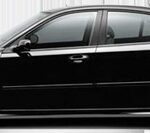The Diesel Particulate Reduction (DPR) system, found in many industrial vehicles, plays a crucial role in minimizing harmful particulate emissions. Understanding how the DPR system works, particularly the regeneration process, is essential for maintaining vehicle performance and longevity. This article will delve into the “Dpr Regenerate In Progress” status, outlining its significance and the different regeneration methods.
DPR Filter Clogging and Regeneration: How it Works
The DPR filter traps soot and particulate matter from the engine exhaust. As these particles accumulate, the filter eventually becomes clogged, hindering engine performance. This is where the “DPR regenerate in progress” status comes into play. Regeneration is the process of burning off the accumulated soot, cleaning the filter, and restoring its efficiency.

DPR filter clogging status indicator (may vary depending on vehicle model)
There are three key strategies for DPR filter regeneration:
1. Automatic Regeneration
This process occurs passively during normal vehicle operation. The engine control unit (ECU) adjusts engine parameters to increase exhaust gas temperatures, facilitating the natural combustion of accumulated soot. You might notice a slight change in engine noise or a higher idle speed during this process. Automatic regeneration requires no driver intervention.
2. Manual Regeneration
When operating conditions prevent sufficient automatic regeneration (e.g., frequent stop-and-go driving, low speeds), manual regeneration becomes necessary. A flashing DPR warning light on the instrument panel signals the need for manual regeneration.
This process typically involves:
- Parking the vehicle in a safe location, away from flammable materials.
- Engaging the parking brake and selecting neutral gear.
- Starting the engine and ensuring any power take-off (PTO) is disengaged.
- Allowing the engine to reach operating temperature.
- Pressing a dedicated manual regeneration button (location may vary by vehicle model). The engine will then run at an elevated speed for 15-20 minutes to burn off the soot.
Important Safety Note: Manual regeneration produces extremely hot exhaust gases. Adhere to all safety precautions outlined in your vehicle’s user manual.
3. Forced Regeneration
If manual regeneration requests are ignored and the filter becomes excessively clogged (often indicated by a tenth notch on the clogging indicator or a persistent warning light), forced regeneration is required. This procedure involves using a diagnostic tool to initiate and control the regeneration process. It’s typically performed by a qualified technician.
Understanding “DPR Regenerate In Progress”
The “DPR regenerate in progress” status indicates that the system is actively cleaning the filter. Whether initiated automatically, manually, or forcibly, this process is crucial for maintaining the DPR system’s effectiveness. Ignoring regeneration requests can lead to severe filter clogging, requiring costly replacement. Regularly monitoring the DPR warning light and adhering to the manufacturer’s recommended regeneration procedures will ensure optimal performance and prolong the lifespan of your DPR filter. Consult your vehicle’s user manual for specific instructions regarding DPR regeneration for your model.

